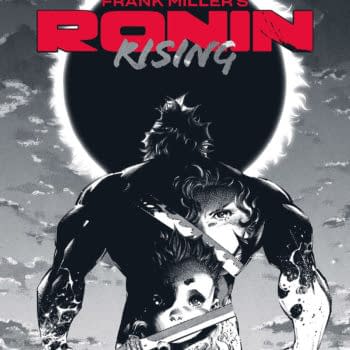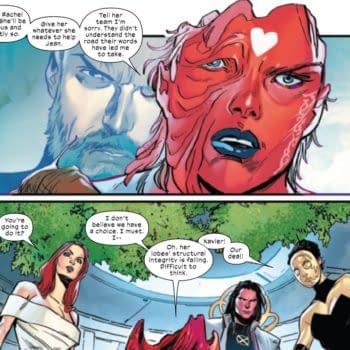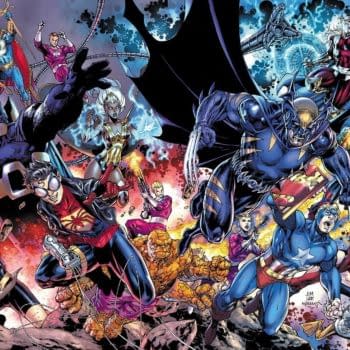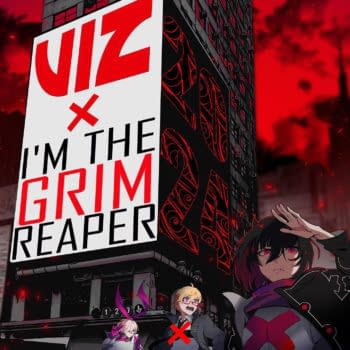Posted in: Comics | Tagged: Comics
Brevity is The Soul of Wit… And Newsstand Comic Book Sales by Darin Wagner
Darin Wagner writes for Bleeding Cool
Some months ago, patrons of Barnes & Noble may have noticed that comic books were back. The days of comics being a mass market item seem to be returning, I thought. So I picked one up and paged through it. I won't say which title it was, but it was one featuring a character I do have fondness for. I was done looking at it within fifteen seconds flat. I don't mean that I came to a decision on whether I was going to buy it or not in fifteen seconds flat. I mean I literally blew through the content in fifteen seconds flat.
There wasn't much there. The entire comic book, all 20-22 pages, was executed in the decompressed, "cinematic" style complete with stacked "widescreen" panels. Now, before I go any further, let me just say that I do like a little bit of cinematic style here and there… maybe for one or two pages in a given comic book. It's a great way to jar the reader with a change of pace and add some seriousness and sometimes even a dash of "realism" to the story. It's good for moments… but a whole comic? That's debatable at best. One thing I do believe vehemently is that it's a very poor choice of style for a comic book intended to be a mass market product.
The reason I believe this is simple: It doesn't leave a given single issue of a comic book with enough content to justify the price. Someone who doesn't read comics, but liked any of the recent Marvel movies or the Nolan Batman films will pick up one of those comics and will put it back for that very reason. Back when I was first collecting comics in the early '80s, every issue, even if it was part of a multi-part story (most of which back then were two-parters, btw), was a product in-and-of-itself. These comics were satisfying purchases because they were written not only to move the story and the character along but also to accommodate the first-time reader… and stuff actually happened in them. A lot of stuff.
My own personal rule when it comes to whether or not a comic book has enough content to justify a purchase is that a minimum of three dramatic moments in it. I don't care what those dramatic moments are… a fight, a revelation, a discovery, an origin briefly retold, a romantic moment, a humorous happenstance… it doesn't matter. Three is good, four or five are better.
Another thing about this comic book that helped things speed along a little too much was that it contained no less than three two-page spreads and three splash pages. Two-page spreads need to be epic. They shouldn't be wasted on depicting someone lying in bed sleeping (unless it depicts an epic dream he/she is having simultaneously) or depicting the main character's new apartment (particularly if it's a normal apartment) or two people talking. Two-page spreads are something to generally avoid, in my opinion. Most of the dramatic moments that do find their way onto two-page spreads can, I feel, be just as powerful as a full-page splash or as a half-page panel. Think of the most memorable and powerful moments in modern comics and count how many were two-page spreads. When Bullseye stabbed Elektra, it wasn't a two-page spread. The first time we saw Bruce Banner caught in mid-air with the Gamma Bomb going off behind him, it wasn't a two-page spread. When Jean Grey killed herself in front of Cyclops, it didn't happen on a two-page spread. When Supergirl died in the first Crisis, it wasn't a two-page spread. When Beta Ray Bill first became Beta Ray Thor, it wasn't a two-page spread. When Batman rendered Guy Gardner unconscious with one punch, it didn't happen on a two-page spread. None of these moments were splash pages either. They are two-page spreads in our minds, but they aren't on paper.
"Writing for the trade" doesn't work at a newsstand… even one in a place like B&N where trade paperbacks are available. If the story has been written for a trade, I feel it should be available solely as a trade. Keep the stories in monthly comic books that are intended to be for the mass market quick and action-packed. Trade paperbacks that collect a story or story set are just that – collected editions. Readers will understand if, while reading the trade, there are recaps happening every 22 pages or so.
"Mass market" means you are not going after people who are already hooked on comics. Those people buy them at comic book shops. You are going after people who don't read them. Maybe they did way back when and don't now or maybe they have never picked one up before. In any case, the product should accommodate them. They need to have value. An inflated, padded story fragment isn't going to give anyone the bug. On the contrary, it will turn them off to comics. Get to the point and tell the story.













